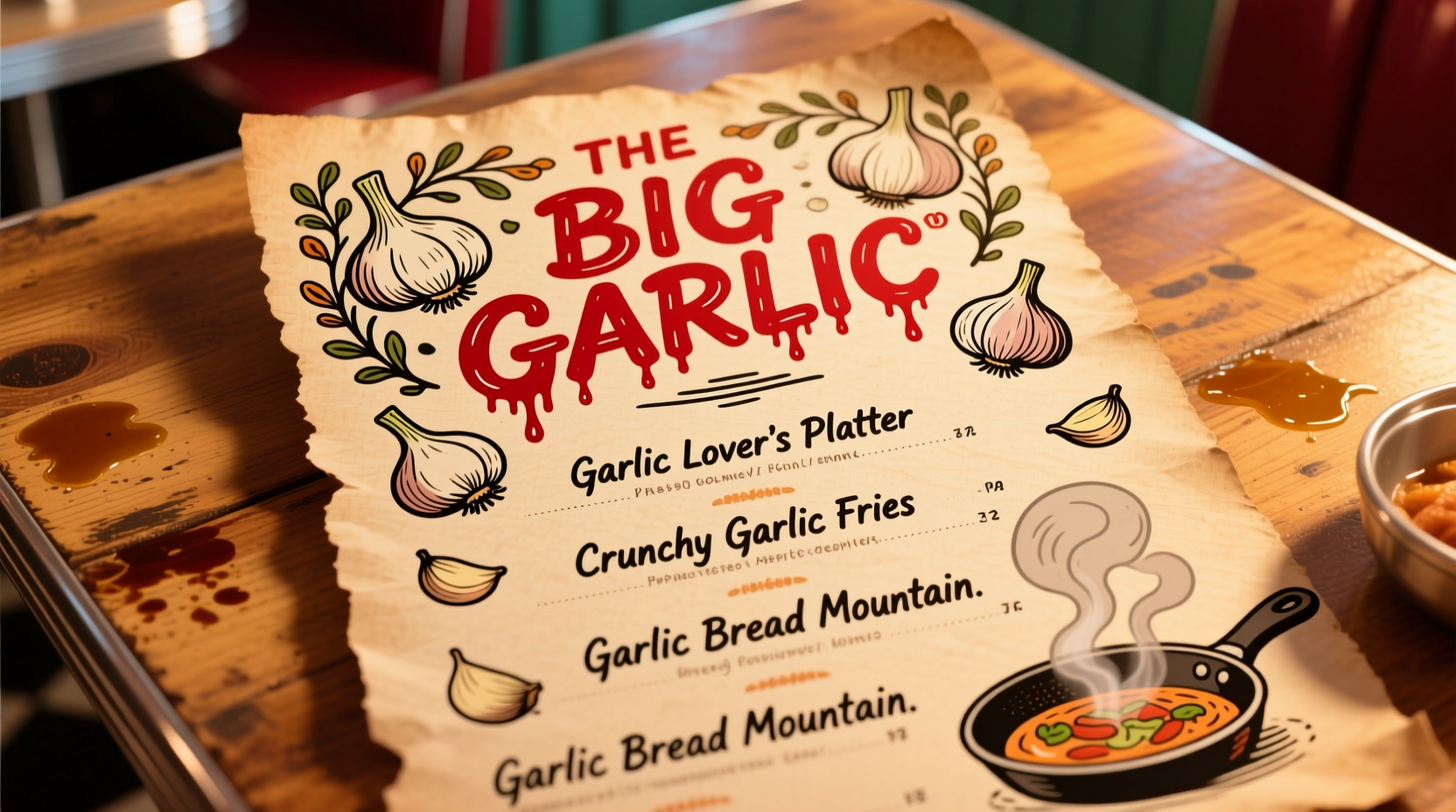When searching for the big garlic menu, diners typically want to understand what dishes to expect, pricing structure, portion sizes, and how to navigate garlic-heavy offerings based on their dietary preferences. This comprehensive guide delivers exactly that information while providing practical insights you won't find on standard restaurant websites.
What Makes a True Garlic Menu Special
Garlic isn't just a seasoning—it's the star of the show in dedicated garlic menus. Unlike standard restaurant offerings where garlic plays a supporting role, restaurants featuring the big garlic menu build entire dishes around this versatile bulb. Chefs specializing in garlic-focused cuisine understand its complex flavor profile that transforms dramatically based on preparation method.
According to culinary research published by the National Center for Biotechnology Information, garlic contains over 30 sulfur compounds that create distinct flavor notes when prepared differently. This scientific understanding informs how professional kitchens develop the big garlic menu offerings.

Global Garlic Specialties You'll Find
Garlic menus vary significantly based on culinary tradition. Understanding these regional differences helps you select dishes that match your flavor expectations. Here's how garlic takes center stage across world cuisines:
| Cuisine Type | Signature Garlic Dish | Garlic Preparation | Flavor Profile |
|---|---|---|---|
| Mediterranean | Ajó de Gallo (Spain) | Slow-cooked in olive oil | Creamy, mellow, nutty |
| French | Poulet au Beurre d'Ail | Raw in compound butter | Sharp, pungent, aromatic |
| Asian | Garlic Noodles (Vietnam) | Fried until golden | Crispy, sweet, caramelized |
| Middle Eastern | Toum (Lebanon) | Emulsified raw | Intense, spicy, creamy |
How to Navigate the Big Garlic Menu Like a Pro
Ordering from garlic specialty menus requires different strategies than standard dining experiences. Follow these practical steps to ensure you get exactly what you want:
Step 1: Understand Garlic Intensity Levels
Professional kitchens typically categorize garlic dishes by intensity. Ask your server about these common classifications:
- Mild garlic presence - Subtle background notes (1-2 cloves per serving)
- Garlic-forward - Noticeable garlic flavor without overwhelming (3-4 cloves)
- Garlic-centric - Garlic as the primary flavor component (5+ cloves)
- Garlic immersion - Dishes where garlic is the main ingredient (whole bulb preparations)
Step 2: Consider Timing and Social Context
Garlic's potent aroma affects more than just taste. The USDA's FoodData Central database confirms that allicin—the compound responsible for garlic's distinctive smell—can linger for hours after consumption. Be mindful of these context boundaries:
- Business meetings: Opt for roasted garlic dishes (milder aroma)
- First dates: Request dishes with separated garlic components
- Photoshoots: Avoid raw garlic preparations 24 hours beforehand
- Important events: Choose black garlic options (minimal odor)
Health Considerations When Ordering
While the big garlic menu offers delicious options, understanding the nutritional impact helps make informed choices. One medium garlic clove (3g) contains:
- 4.5 calories
- 1g carbohydrates
- 0.2g fiber
- Significant manganese, vitamin B6, and vitamin C
Research from the National Institutes of Health indicates that aged garlic extract shows the most consistent cardiovascular benefits. When ordering from garlic-focused restaurant menus, look for dishes featuring:
- Roasted garlic (increased antioxidant availability)
- Black garlic (higher antioxidant concentration)
- Raw garlic in dressings (maximum allicin content)
Customizing Your Garlic Experience
Most establishments offering the big garlic menu welcome customization requests. Use these professional tips to tailor your meal:
Dietary Adaptations
Whether you have specific dietary needs or preferences, communicate these clearly:
- Low-FODMAP diets: Request dishes with green garlic tops instead of bulbs
- Vegan options: Substitute dairy in garlic sauces with coconut milk
- Allium sensitivity: Ask for dishes prepared with asafoetida (hing) as alternative
Flavor Balancing Techniques
Professional chefs use specific methods to balance intense garlic flavors. When ordering, consider these adjustments:
- Add acid: Request extra lemon juice to cut through garlic intensity
- Increase sweetness: Ask for caramelized onions to complement garlic notes
- Texture contrast: Order dishes with crispy elements to balance soft garlic
- Temperature play: Combine hot garlic dishes with cool accompaniments
Garlic Menu Evolution Timeline
Understanding how garlic specialty menus developed provides context for modern offerings:
- 2500 BCE: Earliest recorded garlic cultivation in Mesopotamia
- 18th Century: French chefs begin featuring garlic prominently in regional dishes
- 1970s: California garlic boom leads to dedicated garlic festivals and menus
- 2000s: Molecular gastronomy techniques applied to garlic preparation
- Present Day: Restaurants worldwide offer specialized the big garlic menu experiences
When Garlic Menus Might Not Be Right For You
While garlic-focused dining experiences delight many, certain situations warrant caution:
- Before dental procedures (garlic can thin blood)
- During certain medication regimens (consult your pharmacist)
- If you have allium sensitivity or IBS
- Prior to voice-intensive activities (garlic affects vocal cords)











 浙公网安备
33010002000092号
浙公网安备
33010002000092号 浙B2-20120091-4
浙B2-20120091-4